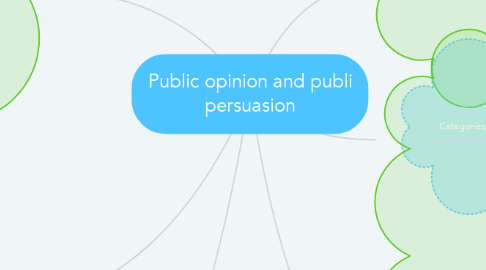
1. Type of publics
1.1. Employee
1.1.1. The most important public
1.2. Local community
1.2.1. people who live in vicinity
1.3. Prospective staff
1.3.1. exist in other organization
1.4. Suppliers and services
1.4.1. who supply goods and service to the organization
1.5. Distributors
1.5.1. refer to those individuals or firm who handle the goods in bulk
1.6. Consumers and users
1.6.1. final customers
1.7. Opinion leader
1.7.1. comprise all those people who expressed opinion and influece people
1.8. The media
1.8.1. Channel of communicationn
2. Grunig situational therory of public
2.1. The extent to which they passively or actively communicate about an issue
2.2. The extent to which they actively behave in a way that supports or constrains the organizations pursuit of its mission
2.3. Actively when level iof involvement of people
2.4. Actively when the consequence of what organization does are a problem
2.5. Constraint recognition by doing something about the problem
3. Public opinion
3.1. Definition
3.1.1. what most people in a particular public think
3.1.2. a collective opinion of many individual bound into a group by common sense
3.2. Formation of public
3.2.1. 1. opinion leaders (makers)
3.2.2. 2. share to attentive public
3.2.3. 3. Inattentive public will become interested
3.2.4. 4. the expression of opinion
4. Reason to identify public
4.1. 1.to determine relevant public relations programmers.
4.2. 2. to determine priorities and work within budget resources provided.
4.3. 3. to reduce media cost that will reach these selected public that is advertised in business media.
4.4. 4. to prepare messages in a form that is acceptable and in effective form.
5. Catagories of publics
5.1. Internal public
5.1.1. Group of people who are already part of organization.
5.2. External public
5.2.1. Group of people who are not necessarily part of a particular organization.
6. Persuasion
6.1. Definition
6.1.1. a communication process that changes attitude, be;ief, opinion or behaviour
6.2. Uses of persuasion
6.2.1. 1. change or neutralize hostile opinions
6.2.2. 2. crystalallize latent opiniond and positive attitudes
6.2.3. 3. converse favorable opinion
6.3. Persuasive process
6.3.1. 1. presenting
6.3.2. 2. attending
6.3.3. 3. comprehending
6.3.4. 4. yielding
6.3.5. 5. retaining
6.3.6. 6. acting
6.4. Factors in persuasive communicate
6.4.1. 1. audience analysis
6.4.2. 2. source credibility
6.4.3. 3. appeal to self-interest
6.4.4. 4. clarity of message
6.4.5. 5. timing and context
6.4.6. 6. audience participation
6.4.7. 7. suggestion for action
6.4.8. 8. content and structure of message
